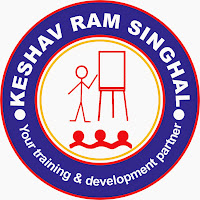PROBLEM SOLVING APPROACH ‘DRIVE’
‘DRIVE’ is a problem solving methodology. It is an approach to problem solving and analysis that can help an organization to improve its processes.
The full form of ‘DRIVE’ is ‘Define-Review-Identify-Verify-Execute’. Using this methodology requires following steps:
D – Define – You should define – (i) the scope of your problem, (ii) the success criteria measurements – including deliverables and success factors that you agree
R – Review – Review the current situation of the problem, understand the background of the problem, determine and collect information – performance data, problem areas, improvement options
I – Identify (determine) – Identify (determine) improvement options or solutions to the problem – What changes you need to improve your process so as to enable to rectify the problem
V- Verify – Verify (check) – Whether determined improvement options or solutions will bring those results that we defined as the success criteria measurements
E – Execute (implement) for solutions and improvement – Plan and execute improvement options or solutions, check the results.
We are a quoting a simple example using ‘DRIVE’ methodology. In a class, when result of first assessment test announced, the management was worried looking to the result that 50 percent students failed in Mathematics, while in other subject the result was 95 to 100 percent. The school management used the problem solving approach ‘DRIVE’.
Define – Scope of the problem – 50 percent students failed in Mathematics. Success criteria – 95 percent students should get good marks in Mathematics.
Review – Current situation – Students of the class are good in other subjects. They could not get good marks in Mathematics. Background – The mathematics teacher resigned in the month of July and the Mathematics class is taken by other subject teacher. There is a shortage of Mathematics subject teachers in the school. School requires three Mathematics subject teachers, while there are two only. Problem area – Recruitment process requires advertisement in local newspapers and then selection of qualified teacher. No action yet initiated. Improvement option – Immediate action to start recruitment process
Identify – Identify (determine) – the recruitment procedure with timeframe objective and also during the time gap outsource Mathematics teacher from other schools and also plan taking extra periods on Sunday with the help of two Mathematics teachers available in the school on payment of extra remuneration.
Verify – Verified shortage of teachers and found improvement options suitable to solving the problem.
Execute – The school management took immediate steps to contact nearby schools and one school agreed to depute their one Mathematics teacher for one month. Extra classes were organized on Sunday with the help of two teachers. Recruitment process started and within one month a new Mathematics teachers recruited.
Thus the school management is able to improve its processes by using a problem solving approach ‘DRIVE’.
How you liked the write-up. Please post your comments. Thanks.
- Keshav Ram Singhal

No comments:
Post a Comment